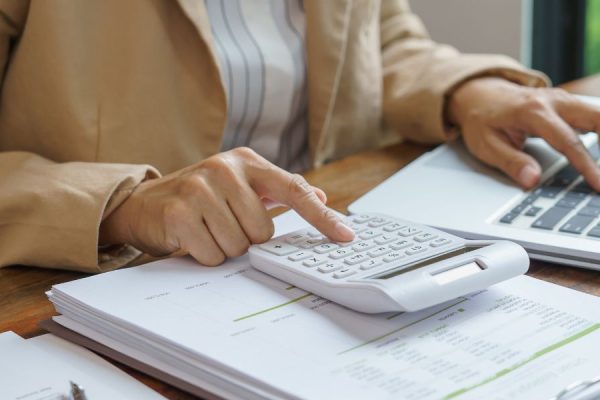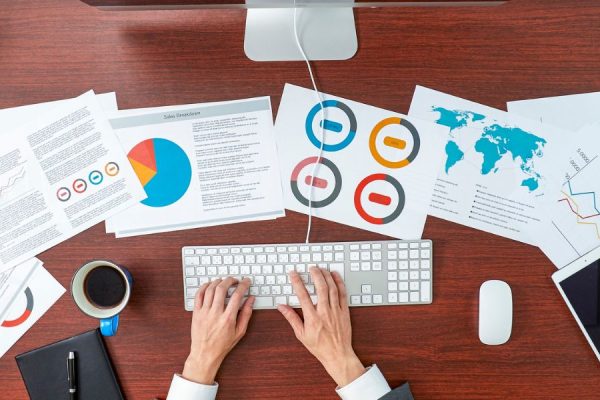The self-assessment tax return in the UK may appear to be a formidable and difficult task to complete, particularly when you are unfamiliar with it. Nonetheless, under proper guidance and knowledge, it can be a simple affair. Whether you are a freelancer, a business owner, or a person with some other sources of income, it is crucial to know how to complete your tax return to be called Self-Assessment to remain within the frameworks of the HMRC.
Here is the complete process of preparing a Self-Assessment Tax Return in the UK step by step to make sure that you do not miss any relevant deadline or allowance which may save you some money.
What is a Self-Assessment Tax Return?
Self-Assessment is a system that collects the income tax in the UK by the HMRC (Her Majesty’s Revenue and Customs). The lowest-paid individuals, whose income does not come under the PAYE (Pay As You Earn) system, are required to submit a Self-Assessment tax return. This encompasses freelancers, individuals who are self employed or people whose income is derived either through property, investments, or otherwise.
Self-Assessment Tax Return enables one to remit all his or her earnings, deduct the expenses it is allowed to deduct and calculate the amount of tax they pay. The information that is given in the return is used by HMRC to determine the amount of tax you have to pay.
Who Needs to File a Self-Assessment Tax Return?
Not everyone is required to file a Self-Assessment Tax Return. However, you will need to file one if:
- Self-Employed or a Sole Trader:
- Have Additional Income:
- Company Director:
- Have Capital Gains:
- Have Earned Above the Income Threshold:
Step-by-Step Guide on How to File a Self-Assessment Tax Return
If you follow these steps then you can file a Self Assessment Tax Return in a simple way.
Step 1: Sign-up to Self-Assessment.
You have to be registered with HMRC before you can file a Self-Assessment Tax Return. In case you have already prepared a tax return, then you are already registered. Nevertheless, when it is your first time, the registration process will be required.
Online Registration: Go to the HMRC site and open up the Government Gateway account. This will enable you to enroll in Self-Assessment on the internet.
Registration Deadline: If you have never filed a tax return, you must be registered by October 5th after the tax year you are required to file (April 5 th to April 6 th).
Getting Your UTR: Once you have registered this will be sent by HMRC as your Unique Taxpayer Reference (UTR). This is a 10-digit identifier that is primarily used to identify you under the Self-Assessment system.
Step 2: Collect Your Financial Data:
You have to collect the required financial documents and information and before filling your tax return you should do it. Such documents will enable you to report the correct details in regard to your income and claim on allowable expenses.
Some of the most frequent documents and information you might require are as follows:
- Income Information:
- Income derived through employment is paid as PAYE payslips or P60s.
- Self-employment or sole trader Business income statements.
- Bank statements or evidence of other source of incomes say dividends or interest on savings.
- Rental income provides details whether you are the owner of rented property.
- Foreign income information available or not.
- Expenses Information:
- Expenses on receipts of those expenses that are related to the business in case of self-employment.
- Details of any business mileage or vehicle expenses as may be the case.
- Evidence of any charity donations, which can be tax relieved.
Step 3: Choose Your Filing Method
You can also submit your Self-Assessment Tax Return online or through paper. Nonetheless, the online filing is much faster and more flexible.
Online Filing
The Online Portal of HMRC: HMRC Online Portal is the fastest method of filling your Self-Assessment Tax Return. After registering and getting your UTR, you will be able to log in to the portal and fill your return electronically.
Deadlines: Your online return is due no later than January 31 st following the end of the tax year (e.g., the tax year ending April 5 th would have a deadline of January 31 st the next year).
Advantages: The faster processing of online returns and you will also have your tax liability computed instantly.
Paper Filing
Form SA100: You can submit your return on the SA100 form, by mailing it to HMRC.
Deadlines: The paper filing deadline is 31st October after the conclusion of the tax year.
Disadvantages: Paper filing is more time consuming and you cannot get instant calculation of your tax.
Although paper filing is possible, there is a general benefit of online filing since it is quick and efficient.
Step 4: Complete Your Tax Return
After you decide which approach to fill in, now it is the time to complete your Self-Assessment Tax Return. The form will require details on your income and expenses you are allowed whether online or on paper.
Important Areas in the Tax Return:
Personal Information: This will contain your name, address and National Insurance number. You will also be requested to provide your UTR and unique taxpayer information.
Income Information: You will be required to give information concerning all your sources of income such as employment, self-employment, rental income and any other income (such as dividends or foreign income).
Allowable Expenses: When dealers are self-employed, you may have the expense of business travels, office supplies and other business essentials as having been incurred during the time of earning the expense. HMRC gives specifications on what is acceptable.
Tax Reliefs: You may also claim any tax reliefs available to you, e.g. pension contributions, charity donations or marriage allowance.
Capital Gains: In case you have sold off property or investments and made a profit then you also need to report about it.
Once you have entered all the information needed, HMRC will automatically calculate your tax liability (when you file online). Before submitting, be sure to go through properly.
Step 5: Submit Your Tax Return
Having filled your Self-Assessment Tax Return, you should then submit them to HMRC.
Online Submissions: After checking over your return and being sure that it is accurate you can submit your return online through the HMRC online portal.
Paper Submissions: When you are submitting on paper, you must ensure that you are submitting your duly completed SA100 form to HMRC in time.
Step 6: Pay Your Tax Bill
After you have filed your return, the HMRC will compute the amount of your tax owed depending on the information which was supplied.
Payments Deadline: The deadline to pay any tax due is the 31 st of the month after the end of the tax year (the same date as the filing deadline).
Making the Tax payment: You have a number of ways through which you can pay your tax bill through online banking, debit/credit cards and direct debit. Another way through which HMRC supports is a payment plan in case a person cannot afford to pay the whole amount at once.
Step 7: Keep Your Records For Future:
After filing your tax return and paying your taxes, you should maintain a record of all your financial records for at least 5 years. HMRC might demand to view these records in case they have an audit/review of your tax return.
Common Mistakes to Avoid When Filing Your Tax Return
- Missing Deadlines:
- Incorrect Information:
- Failing to Claim Allowable Expenses:
- Not Keeping Records:
Conclusion
It does not need to be daunting to file your Self-Assessment Tax Return so long as you do the right thing. You can create an account with HMRC and file your return and pay a tax bill, and every step of the process is not too difficult with the proper knowledge and resources. You may prevent needless stress and punishment by being organised; deadlines are to be met.
At any point in time, when you are not sure, consult an accountant or a tax expert who will guide you towards ensuring that your return is correct and complete. It is not just a legal obligation but also the opportunity to organize your financial spending better filing your tax return.
if you’re looking for self-assessment tax return service in UK get in touch with RMA Accountants.





